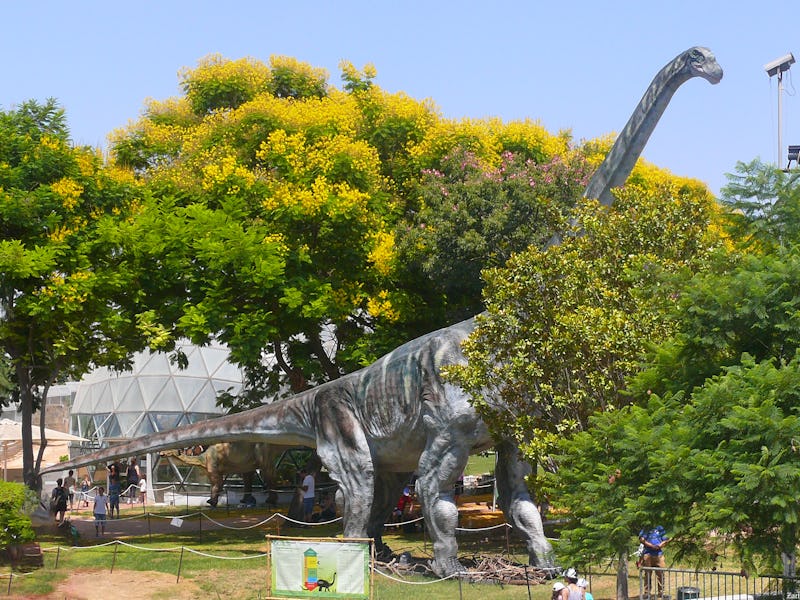Paleontologists Explain Why Sauropod Dinosaurs Like the Brontosaurus Didn't Collapse
It takes a strong foundation to support a 100-ton beast.

The evolution of the biggest dinosaurs must be among the most spectacular things to have ever occurred in the history of our planet. Imagine the Argentinosaurus, almost as big as a blue whale, roaming what is now South America nearly 100 million years ago. How the beast grew to a weight of 100 tons on a diet of plants and leaves is nearly unfathomable and has puzzled paleontologists and dino-lovers alike for some time.
Now, research published in Royal Society Open Science sheds fresh light on the evolutionary history of these enormous creatures. The scientists used computer models to help understand how the biggest terrestrial animals evolved from much smaller cousins that roamed on two back feet. This shift “involved fundamental changes to most aspects of their biology,” the authors write.
Specifically, the research team used a computer model to evaluate shifts in the center of mass of dinosaurs in the sauropod family. The sauropod family included well-known giant herbivores like the Brachiosaurus, the Diplodocus, and the Brontosaurus. These animals evolved from prosauropods, which were smaller and mostly had the ability to walk, or at least rear up, on two feet. What the scientists discovered is that the beasts’ center of mass shifted in ways that correlate with their evolutionary history. The prosauropods saw their mass shift towards the tail at a time when many different families of dinosaurs were evolving bipedalism. This allowed them to reach higher branches, but there’s a limit on how big you can get while balancing on two feet.
And so the trend reverted. Mass shifted forward, and sauropods evolved column-like legs, big enough to support long, muscular necks and tails. The massive size of the beasts is both cause and effect. The longer their necks got, the more food they could reach without having to move around a whole lot. The more food they could reach, the bigger they got.
The sauropods got bigger and bigger and bigger.
This chart demonstrates the evolutionary path. Those hilarious dinosaur silhouettes are not meant to be a representation of what the dinosaur would have looked like, but of its mass distribution. This “standard reference posture” was used by the computer model to generate estimates of the body length and mass of the beasts. By the time they hit 100 tons, these creatures had become little more than highly efficient foliage processing machines. By comparison, cows spend eight hours a day chewing and weigh about less than ton. Great apes chew four to seven hours per day.
The ability of the sauropods to ingest and digest insane volumes of greenery served them well. The largest among them, the titanosaurs, turned out to be the most resilient in the long run. These enormous creatures outlived the rest of the sauropods and were the herbivore rulers of prehistoric Earth until the great Cretaceous extinction event that wiped out all of the non-avian dinosaurs.